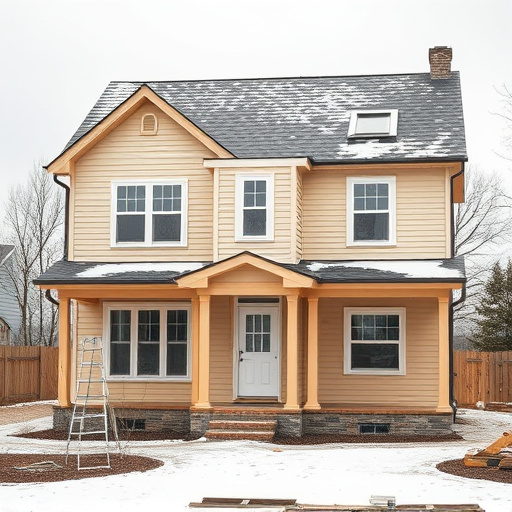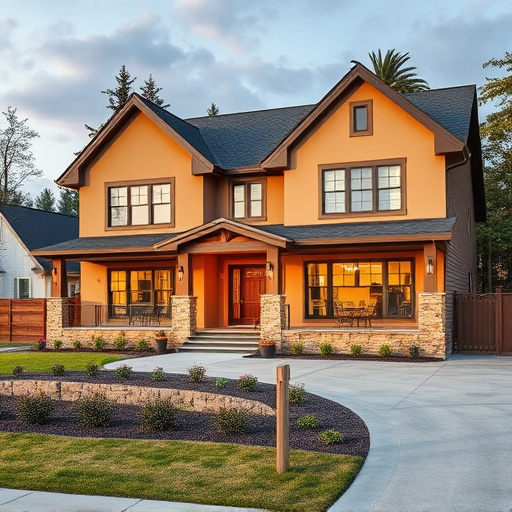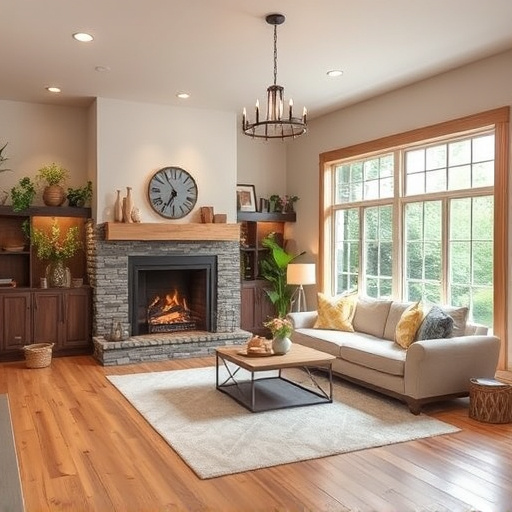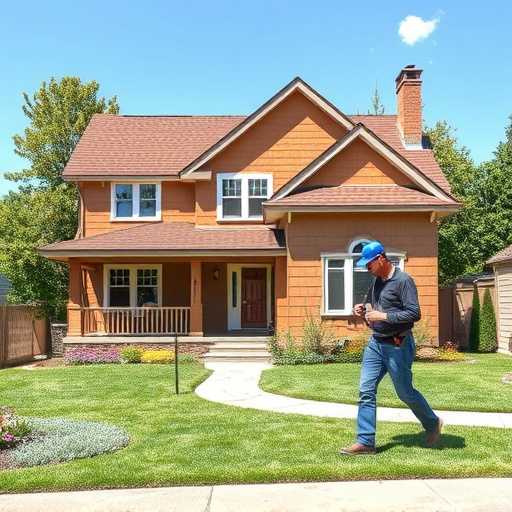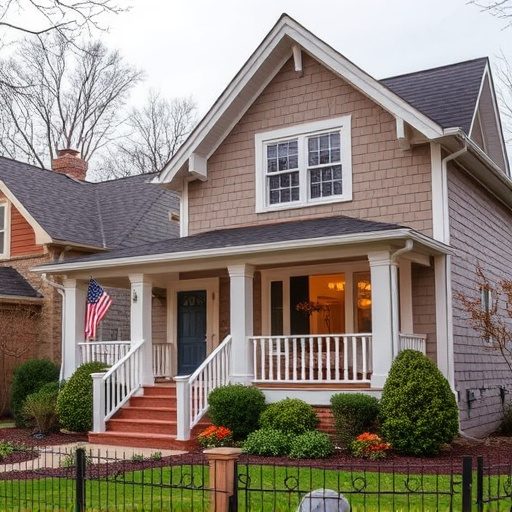Designing a sustainable office involves choosing eco-friendly materials for furniture and fitouts, such as bamboo, reclaimed wood, and organic cotton, to reduce the carbon footprint and enhance productivity. Supporting local manufacturers and minimizing packaging further reduces environmental impact, aligning with home improvement trends. Natural linoleum, cork floors, and biodegradable wall coverings add durability and health benefits. Incorporating locally sourced and upcycled materials improves aesthetics, employee well-being, and aligns with smart renovation strategies, transforming offices into vibrant, eco-conscious spaces that inspire collaboration and reflect sustainability commitment in the broader community.
Creating a sustainable office design isn’t just an environmental responsibility; it’s a powerful tool for enhancing employee well-being and productivity. By integrating eco-friendly materials, strategically optimizing natural light and ventilation, and promoting green spaces, modern offices can become vibrant hubs that contribute to both planet health and human flourishing. This article explores practical ideas and innovative solutions to transform your workspace into a greener, more sustainable oasis using smart office design.
- Choosing Eco-Friendly Materials
- – Selecting sustainable and recyclable materials for furniture, flooring, and wall coverings.
- – The impact of natural, upcycled, and locally sourced materials on office aesthetics and environmental footprint.
Choosing Eco-Friendly Materials
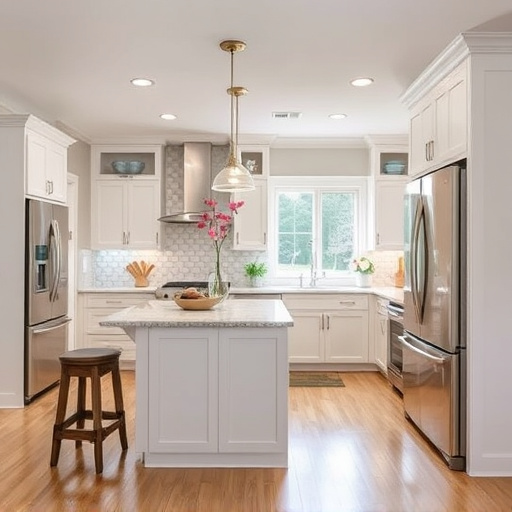
When designing a sustainable office, one of the key aspects to consider is the selection of eco-friendly materials for furniture and fitouts. Opting for environmentally conscious options not only reduces the carbon footprint but also contributes to creating a healthier workspace. Look for suppliers who prioritize recycled, natural, or sustainably sourced materials such as bamboo, reclaimed wood, and organic cotton fabrics. These choices can significantly minimize waste and pollution associated with traditional office fittings, making them ideal for modern, eco-conscious businesses.
Furthermore, choosing products from local manufacturers or those with minimal packaging reduces the environmental impact of transportation. This approach aligns with the broader trends in home improvement services and home remodeling, where there’s a growing emphasis on sustainability. By embracing these practices, office design can evolve into an art that enhances productivity while preserving our planet, ensuring a greener future for workplaces and beyond.
– Selecting sustainable and recyclable materials for furniture, flooring, and wall coverings.
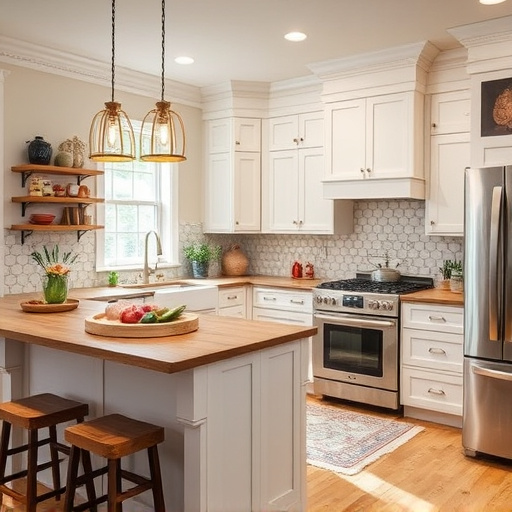
Creating a sustainable office design starts with mindful choices for essential furniture, flooring, and wall coverings. Opting for eco-friendly materials like bamboo, recycled plastic, or reclaimed wood for furniture not only reduces environmental impact but also adds unique character to your workspace. When it comes to floors, consider natural linoleum or cork, which are durable, renewable, and offer excellent insulation—a benefit often overlooked in traditional office settings. Similarly, choose wall coverings that can be easily recycled or made from biodegradable materials, such as wool or plant-based fibers.
Incorporating these sustainable materials into your office design not only contributes to a greener planet but also fosters a healthier work environment. It sends a strong message to employees and clients alike about your commitment to environmental stewardship. Moreover, these eco-friendly options often prove more cost-effective in the long run, aligning with smart home renovation strategies, as they are durable and require less frequent replacement—a win-win for both businesses and the planet.
– The impact of natural, upcycled, and locally sourced materials on office aesthetics and environmental footprint.
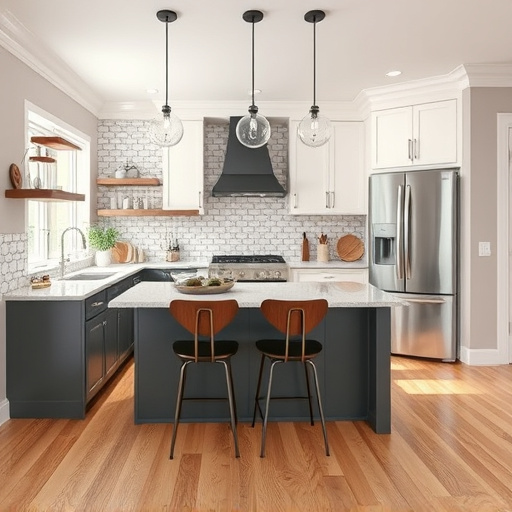
Incorporating natural, upcycled, and locally sourced materials into office design is a powerful way to enhance aesthetics while significantly reducing environmental impact. These materials bring a unique charm to functional spaces, creating an inviting atmosphere that reflects a company’s commitment to sustainability. In terms of office design, such choices not only contribute to a greener workplace but also positively influence employee well-being and productivity. For instance, using locally sourced wood for furniture or walls can offer a warm, natural beauty that complements modern aesthetics without the need for excessive transportation.
Moreover, upcycled materials from bathroom renovations or multiple room remodels—such as repurposed doors, windows, or even recycled glass—add a layer of storytelling to the office landscape. This approach not only diverts waste from landfills but also fosters a sense of creativity and innovation among employees. By embracing these sustainable practices, offices can transform into vibrant, eco-conscious spaces that inspire collaboration and serve as a testament to the company’s values in the broader community.
Sustainable office design isn’t just a trend; it’s a necessary step towards a greener future. By choosing eco-friendly materials, we not only reduce our environmental impact but also create healthier and more aesthetically pleasing workspaces. Incorporating natural elements, upcycled products, and locally sourced materials can transform an office into a vibrant, sustainable haven that attracts employees and clients alike. Embracing these design ideas is a powerful way to contribute to the planet’s well-being while fostering a productive and innovative work environment.





